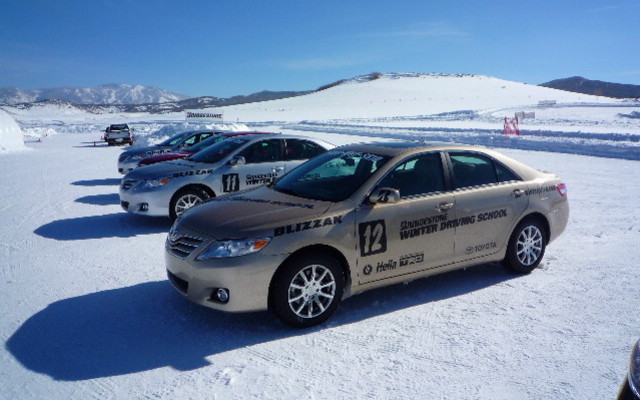Bridgestone’s Blizzak tires: The secret is in the rubber
The 1992 launch of Bridgestone’s Blizzak winter tires was a veritable revolution. This tire was considerably more effective than all other products on the market. Like many others, it was excellent on snow, but it really set itself apart by offering incredible traction on ice. Passionate drivers all switched over to these tires, which prompted the competition to quickly develop a wide range of products to give Bridgestone a run for its money.
Some companies added nut particles to the rubber, while others opted for silica compound. Another major company even went for cotton particles. Despite these different solutions, Bridgestone’s Blizzak had already made a name for itself as the leader of the pack. It’s not surprising then that Bridgestone has sold more than 150 million of these tires since they entered the market. Success, however, did not stop the company from improving its celebrated winter tire. Although it was highly effective, it still had room for improvement, most notably in terms of durability. After just one season of use, the tread was practically useless – or at very least its incredible traction was gone. And without it, clients were told that their Blizzaks had become all-season tires.
Over the years, the Bridgestone engineers managed to correct this flaw, and premature wear became a thing of the past for Blizzak tires. The current model in the line of Bridgestone products is the WS60, which is reputed for being effective in all conditions, whether it be snow, ice or slush (dry pavement goes without saying). For the 2010-2011 season, the manufacturer is coming out with a new version of the Blizzak, but since the present model is so good, we shouldn’t expect the improvements to be too dramatic. As is usually the case with high-end tires, the effectiveness should improve by 15-20%.
The recipe for success
When comparing the new Blizzak to the one currently on sale, the first thing we noticed is the marked difference in the tread design. Instead of three grooves running lengthwise to wick away water and humidity, the new tires now feature four grooves spread out at equal intervals along its width. Changes were also made to the tread to optimize contact with the road.
With the new groove distribution comes a modification of the tread blocks, which now have a different shape. Also worth noting are new sipes that translate into better road grip and less noise coming from the tires. While these sipes looked to us like simple grooves on the tire surface, they’re actually configured quite differently than the grooves on the WS60 and are more flared toward the inside. Reinforcements between the sipes stablize the tread. The zigzag finish of the sipe edges also contribute to the tire’s traction.
But what really sets Blizzak tires apart from the competition is their composition. First off, Bridgestone was one of the firsts, if not the first, to effectively distribute silica throughout the rubber. These mineral particles tend to clump and are thus very difficult to blend homogenously. Yet, Bridgestone has always done a good job in managing this problem, making improvements over the years.
The new WS70 has benefitted from their experience. The use of silica also ensures the tire’s longevity.
And that’s just part of Bridgestone’s recipe for success. The tread compound contains microscopic bubbles and gripping particles for optimized traction. As I’m no chemistry expert, I will not try to explain the subtleties for the components and polymers behind this achievement. Let me tell you however that the tiny pores remove the layer of water that results from the friction of the tire on the road. This resolves part of the traction equation, particularly on ice. Meanwhile, the small gripping particles act as microscopic nails, providing excellent traction and good lateral support. Of course, the company engineers used nanotechnology to create this tire replete with millions of micropores.
The new Blizzak offers optimal effectiveness until the tread experiences 51% wear. Before that number throws you off, you should know that it represents almost 90% of the usable tread thickness. By the time it gets worn away by 51%, there’s just a very thin usable layer left – not much before the replacement indicators appear.
In sum, this company’s engineers have managed to improve the tread design while simultaneously optimizing the effectiveness of the composition of the usable rubber and micropores. This week, I had the opportunity to try the new WS70 in winter conditions on a test circuit in Colorado, and I can attest to the fact that this product is impressively effective. Unfortunately, it won’t be available until the beginning of next winter. However, if you’re looking to replace your winter tires right now, the WS60 is still a very promising choice, as it is one of the best – if not the best – on the market. I tried them out on a Mazda Sport 3 earlier this winter, and the results were very good.
Next fall I’ll write a complete and detailed report on this winter test, which allowed me to compare the new Blizzak tires with the best products currently on the market. Check back for it next October.









